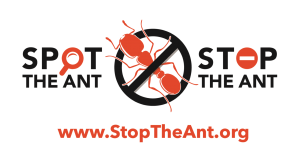 Governor Ige proclaimed September as “Spot the Ant, Stop the Ant Month” in Hawaii and Honolulu Mayor Kirk Caldwell has shown support in the fight with a similar proclamation for Honolulu. In a concerted effort to stop the spread of little fire ants, legislators, state agencies and conservation organizations are urging residents to test their property this month.
Governor Ige proclaimed September as “Spot the Ant, Stop the Ant Month” in Hawaii and Honolulu Mayor Kirk Caldwell has shown support in the fight with a similar proclamation for Honolulu. In a concerted effort to stop the spread of little fire ants, legislators, state agencies and conservation organizations are urging residents to test their property this month.
There will be a host of activities on Oahu this month. Check out our events calendar and find out about the photo contest on Oahu to win prizes all month!
Early detection of little fire ants (LFA) is one of the greatest tools of successful eradication, and it’s extremely likely there are small pockets of these pests on Oahu that have yet to be discovered. It’s best to find LFA before they find you!
What are little fire ants, and why are they so bad?
Unless you’ve encountered the wrath of these tiny pests, you may ask “what’s the big deal?”. Well, among all of the world’s invasive pests – the plants, animals, insects, bacteria…LFA have top-chart billing as one of the world’s worst 100 invasive species.
Little fire ants (LFA) are native to Central & South America, but have been spreading across the Pacific, damaging the envrionmnent, economy and the quality of life of those subjected to their stings. LFA sting the eyes of pets, leading to blindness. LFA damage crops, food production, and the economy everywhere they have spread. LFA alter (or impact) people’s lives because their stings are unavoidable.
Doesn’t Hawaii already have fire ant? How are LFA different?
Many of us have been stung by the common Tropical Fire Ants, which nest in the ground in sunny fields and beach parks. These are NOT the same as Little Fire Ants. LFA is a very tiny ant-about as long as a penny is thick and prefer shady, moist areas. They can nest in the trees and on the ground. LFA’s sting packs a wallop and when they fall out of trees, a person gets multiple stings all at once.
LFA have been detected on all main Hawaiian Islands except Molokai, and are only established on the Big Island. The Hawaii Ant Lab is based in Hilo and conducts research on invasive ant impacts, prevention and treatment methods, and eradication plans. They provide resources and information for the public and work closely with the residents of Big Island to best manage little fire ant infestations around their homes.
Early detection is key to preventing LFA from establishing.
LFA are established in areas on the Big Island and it’s highly unlikely there will be an island-wide eradication, but finding them early significantly increases chances of spreading across the island, as well as between all the islands. When infestations become larger, costs increase dramatically and the chances of successful eradication are also much lower.
On Oahu, the residents of Mililani Mauka were crucial to the success of eliminating the infestation there. A resident brought samples to HDOA after being stung and because of this, the infestation was discovered while it was relatively small. Equally important, all the neighbors allowed staff on their property to test for and to treat the ants.
We need your help!!
LFA can spread across an island and move between islands in any materials – including fresh fruit, cut flowers, potted plants, household items and vehicles. The best way to help is to test your yard for little fire ant at least once a year. It’s easy and a fun activity to do with kids. There are written instructions and a video explaining how to test at the website www.stoptheant.org.

